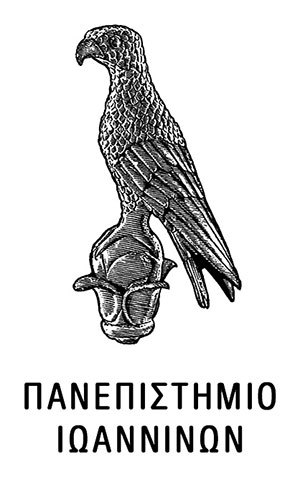Όπως το λαύδανο, η σημασία του οποίου τονίστηκε από τον Άγγλο γιατρό Thomas Sydenham. Επίσης επανέρχεται στο προσκήνιο η αναλγητική δράση του φλοιού της ιτιάς, ενώ εισάγεται από την Κίνα η μέθοδος του βελονισμού. Για την πραγματοποίηση εγχειρήσεων χορηγούν αλκοολούχα ποτά ή χρησιμοποιούν μηχανικές κατασκευές, πρακτικές που δεν ήταν ιδιαιτέρως αποτελεσματικές, με αποτέλεσμα η ένταση του πόνου να εξαρτάται από την ταχύτητα του χειρουργού. Εφαρμόζεται όμως και η μέθοδος πίεσης αρτηρίας ή νεύρου και η ψύξη. Ο Joseph Priestley ανακαλύπτει το πρωτοξείδιο του αζώτου και ο Humphrey Davy αντιλαμβάνεται την αναλγητική του δράση, κάτι που όμως δεν αξιοποιήθηκε κλινικά. Τον 19ο αιώνα σημειώθηκε τεράστια πρόοδος στη θεραπεία του πόνου. Ο Friedrich Wilhelm Serturner απομόνωσε περίπου το 1803 τη μορφίνη, το κύριο αλκαλοειδές του οπίου. Η χρήση της διαδόθηκε πάρα πολύ μετά τη δημιουργία της υποδερμικής σύριγγας το 1853. Όταν έγινε φανερή η εξαρτησιογόνος δράση της μορφίνης, παρασκευάστηκε η ηρωίνη με σκοπό να την αντικαταστήσει, για να αποδειχθεί στη συνέχεια περισσότερο εθιστική. Το όπιο και το λαύδανο παραμένουν δημοφιλή παυσίπονα, ενώ το 1832 απομονώνεται από το όπιο η κωδεΐνη. Το 1829 ο Henry Leroux παρήγαγε από σκόνη του φλοιού της λευκής ιτιάς σαλικίνη, από την οποία ο Raffaele Piria συνέθεσε σαλικυλικό οξύ. O Charles Frederic Gerhard παρασκεύασε πρώτος το 1853 ακετυλοσαλικυλικό οξύ, δεν εκμεταλλεύτηκε όμως εμπορικά την ανακάλυψή του. Ο Felix Hoffmann συνέθεσε ξανά το 1897 ακετυλοσαλικυλικό οξύ, το οποίο η φαρμακευτική εταιρεία Bayer προώθησε με την ονομασία ασπιρίνη και έγινε γρήγορα το Νο 1 φάρμακο στον κόσμο. Μια άλλη σημαντική εξέλιξη του 19ου αιώνα ήταν η απομόνωση της κοκαΐνης από τα φύλλα της κόκας το 1860 από τον Albert Niemann. Ο Karl Koller, μελέτησε τη επίδράση της στον επιπεφυκότα μετά από παρότρυνση του Siegmund Freud και ανακάλυψε την τοπική αναισθητική της δράση. Έτσι αποτέλεσε η κοκαΐνη το πρώτο τοπικό αναισθητικό σε οφθαλμολογικές, ωτορινολαρυγγολογικές και άλλες επεμβάσεις. Οι εξελίξεις στον τομέα της φαρμακολογίας συνεχίζοντια με την απομόνωση της κολχικίνης από το φυτό κολχικό το φθινοπωρινό (1833) και της κινίνη από το φυτό κίνα (1820), ενώ παρασκευάζονται η ακετανιλίδη (1886), η φαινακετίνη (1887) και η παρακεταμόλη (1893). Το 1884 αρχίζει η ιστορία της περιοχικής αναισθησίας, όταν ο William Steward Halsted ανέπτυξε την τεχνική του αποκλεισμού νεύρων με κοκαΐνη. Το 1885 ο Αμερικανός νευρολόγος James Leonard Cornig περιγράφει για πρώτη φορά την επισκληρίδιο αναισθησία με κοκαΐνη. Στη συνέχεια το 1892 ο Κarl Ludwig Schleich παρουσίασε τη μέθοδο της τοπικής αναισθησίας μιας περιοχής μέσω διήθησης των υπερκείμενων ιστών με κοκαΐνη, ενώ το 1898 χορηγήθηκε για πρώτη φορά υπαραχνοειδής αναισθησία με έγχυση κοκαΐνης από τους August Bier και August Hildebrandt. Η μέθοδος της πίεσης νεύρου ή αρτηρίας μέσω σφικτής απολίνωσης για περιοχική αναισθησία στα χειρουργεία των άκρων βελτιώθηκε περαιτέρω από τον Joseph Lister το 1863 και τον Johannes Friedrich von Esmarch το 1875. Το 1807 ο Dominique-Jean Larrey εκτελεί ανώδυνα ακρωτηριασμούς στο πεδίο της μάχης σε θερμοκρασία -19ο C.
(EL)
Pain has always been part of human experience. Over the ages there has been a demand for methods of relief. The aim of this research is to study the evolution of the therapy of acute and chronic pain throughout the centuries until today. Opium, which is obtained from the plant Papaver somniferum, is probably the oldest representative of natural analgesic, given that poppies and seeds of the plant have been found in Mesopotamia dating back to approximately 4000 B.C. The first known written reference of its use appears in a Sumerian text dated around 3400 B.C. The use of opium for analgesic purposes spread to Ancient Egypt. Among the plants which were used as analgesics by the people of Mesopotamia and the Egyptians were mandrake, hyoscyamus, atropa belladonna and other sedative herbs. In order to offer relief for pain during surgery, they used to apply anaesthetic methods which today seem, at best, amusing, and, at worst, cruel and barbaric, such as suffocation after strangulation. In addition, because of the religious and magical explanation which were given to sickness and pain, they believed that they would relieve the pain through prayers and incantations. At the same time as acupuncture was developed in Ancient China, the chewing of coca leaves was practiced throughout South America. Opium was well known to the ancient Greeks in Minoan Crete, from as far back as 1450 B.C. It is believed that the drug nepenthes which Homer mentions in the Odyssey in the 8th century B.C. is opium. Hippocrates was the first who claimed that diseases have natural and not magical causes and attributed the pain to dyskrasia of the four “humors”. There is reference to 236 plants in his work “Corpus Hippocraticum”, most of them with analgesic properties, such as atropa belladonna, hyoskyamus, mandrake, papaver somniferum, bark and leaves of the willow tree. He also recommends baths, exercise and healthy nutrition. However, the use of analgetics during surgery wasn’t established in ancient Greece. Medicine in Rome introduced theriaca, a famous drug, which contained over 100 ingredients with opium being one of the most important. Theophrastus, Pliny the Elder, Dioskourides Pedanios and others describe in detail the medical applications of papaver somniferum. Dioskourides used wine from mandrake to prevent pain during surgery. He also applied sleeping sponge, a sea sponge that was saturated with the mixed juices of soporific plants, to the patient’s nostrils to achieve anesthesia through inhalation. Galen recommended opium in case of serious pain, but he considered it also as a potent poison. The knowledge of Greek and Roman medicine was kept alive and used as a basis during Byzantine times, when theriaca, opium and mandrake were popular painkillers. In the 6th century AD Alexander of Tralles introduces the use of the plant Colchicum automnale for the treatment of pain from gout. In the Middle East, Arabic translation of the Greek medicine helped to make Islamic physicians supreme in the middle Ages and the Arab pharmacopoeia of the time was extensive thanks to Alchemists.
(EN)
 University of Ioannina
University of Ioannina



